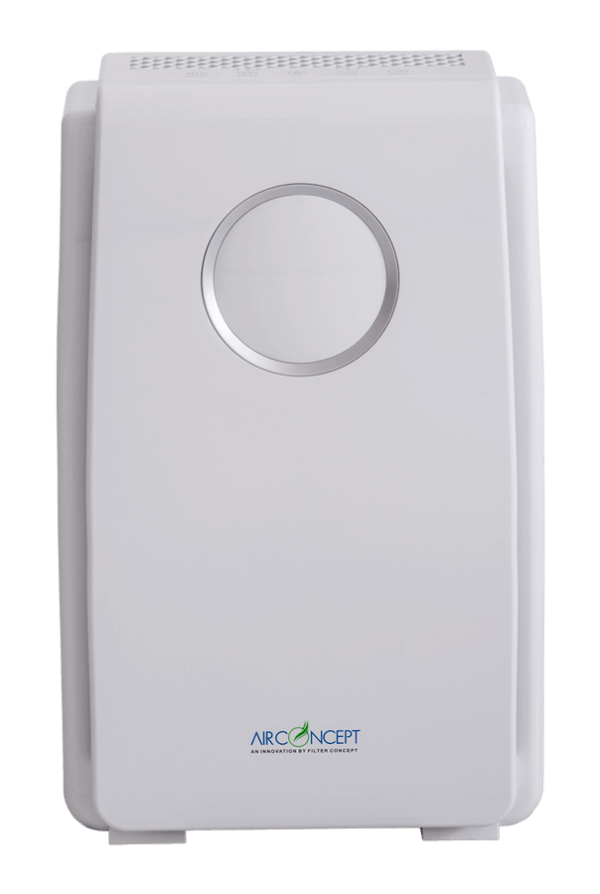In today’s fast-paced world, where pollution levels are constantly on the rise and indoor air often carries more contaminants than we realize, the importance of an air purifier cannot be overstated. Clean air is not just about comfort—it’s essential for health, productivity, and overall well-being. Whether you live in a bustling city or a small town, the invisible particles floating around your home or office can significantly affect your quality of life. That’s where an air purifier steps in, acting as a shield between you and harmful pollutants.
This blog will take you through everything you need to know about air purifiers—their benefits, types, how they work, and tips for choosing the right one.
Why Indoor Air Quality Matters
Most of us spend a large portion of our lives indoors—whether it’s working in offices, relaxing at home, or sleeping. While we might assume the air inside is cleaner than outside, studies have shown that indoor air can actually be 2 to 5 times more polluted than the air outside.
Common sources of indoor air pollution include:
- Dust, pollen, and pet dander
- Mold spores and bacteria
- Household cleaning chemicals
- Smoke from cooking or tobacco
- Volatile Organic Compounds (VOCs) from furniture, paint, and plastics
Prolonged exposure to poor air quality can lead to allergies, asthma, headaches, fatigue, and even long-term respiratory diseases. Children, elderly individuals, and people with weakened immune systems are particularly vulnerable. This is why investing in an air purifier has become more than just a luxury—it’s a necessity.
What is an Air Purifier?
An air purifier is a device designed to remove pollutants, allergens, and harmful particles from the air, making it cleaner and healthier to breathe. By using filters, ionizers, or other advanced technologies, air purifiers trap airborne contaminants that would otherwise circulate in your living or working space.
Think of an air purifier as a silent guardian—it works quietly in the background, ensuring every breath you take is fresher and safer.
How Does an Air Purifier Work?
While the exact mechanism depends on the model, most air purifiers follow one or more of these methods:
- HEPA Filtration – High-Efficiency Particulate Air (HEPA) filters are considered the gold standard. They capture 99.97% of particles as small as 0.3 microns, including dust, pollen, and pet dander.
- Activated Carbon Filters – These are excellent for removing odors, smoke, and chemical fumes. Activated carbon traps gases and volatile organic compounds, improving air freshness.
- Ionizers – Ionizing air purifiers release charged ions that bind with particles, making them heavy enough to fall out of the air or get trapped in a collector plate.
- UV-C Light Purification – Some advanced purifiers use ultraviolet light to kill bacteria, viruses, and mold spores, preventing them from spreading indoors.
- Ozone Generators (Not Recommended for Homes) – These produce ozone to neutralize pollutants but can be harmful to health if not used correctly.
Most modern air purifiers combine two or more of these methods for maximum efficiency.
Benefits of Using an Air Purifier
1. Relief from Allergies and Asthma
Air purifiers are a game-changer for allergy sufferers. By trapping dust, pollen, and pet hair, they prevent these triggers from circulating, helping people breathe more comfortably.
2. Eliminates Harmful Chemicals
Even if you don’t smoke, your home may still harbor chemical pollutants from cleaning agents, paints, and synthetic materials. Activated carbon filters in an air purifier can absorb these chemicals and protect your health.
3. Better Sleep Quality
Breathing clean air reduces nighttime congestion and irritation, leading to deeper, more restful sleep.
4. Neutralizes Odors
Cooking smells, pet odors, or cigarette smoke can linger for hours. An home air purifier helps keep your home smelling fresh.
5. Supports Heart and Lung Health
Long-term exposure to polluted air is linked to heart disease and respiratory problems. Air purifiers reduce these risks by lowering airborne pollutants.
6. Protection Against Airborne Diseases
Some air purifiers with UV-C technology or HEPA filters can trap bacteria and viruses, reducing the chances of infections spreading indoors.
Types of Air Purifiers
When searching for the right air purifier, it helps to know the main categories:
- Portable Room Air Purifiers – Compact units designed for single rooms. Perfect for bedrooms, offices, or small apartments.
- Whole-House Air Purifiers – Installed into HVAC systems, they clean the air throughout the entire home.
- Smart Air Purifiers – Equipped with sensors and Wi-Fi connectivity, these can be controlled via smartphone apps and provide real-time air quality updates.
- Specialty Air Purifiers – Designed for specific purposes, like removing smoke, pet dander, or mold spores.
Choosing the Right Air Purifier
With so many options available, choosing the best air purifier can feel overwhelming. Here are some key factors to consider:
- Room Size – Check the purifier’s coverage area (measured in square feet). Always choose a model slightly more powerful than your room size for better efficiency.
- CADR Rating – The Clean Air Delivery Rate (CADR) measures how quickly a purifier can clean the air. Higher numbers mean faster purification.
- Filter Type – Look for True HEPA filters, not just “HEPA-like” filters. If odors are a concern, opt for models with activated carbon filters.
- Noise Level – Some purifiers can be noisy at higher speeds. Check the decibel rating, especially if you plan to use it in a bedroom.
- Maintenance Costs – Filters need replacement every 6–12 months. Factor in the cost of replacements when making a purchase.
- Smart Features – Auto mode, air quality sensors, timers, and app connectivity make operation easier.
Practical Tips for Using an Air Purifier
- Place it Strategically – Position the purifier in areas where you spend the most time, like your bedroom or living room.
- Keep Doors and Windows Closed – This prevents new pollutants from constantly entering while the purifier is running.
- Replace Filters Regularly – A clogged filter won’t perform effectively. Follow the manufacturer’s guidelines for maintenance.
- Run it Continuously – Air quality fluctuates throughout the day, so keeping the purifier on ensures consistent protection.
- Vacuum and Dust Regularly – Air purifiers work best when combined with basic cleaning habits.
The Future of Air Purifiers
With rising awareness about air pollution and its health effects, the demand for air purifiers is growing globally. Innovations like AI-powered purifiers, advanced sensors, and eco-friendly filters are making these devices smarter and more energy-efficient. In the future, we can expect air purifiers that not only clean the air but also integrate seamlessly into smart home ecosystems, ensuring healthier living environments for everyone.
Final Thoughts
An air purifier is no longer just an optional household gadget—it’s an investment in your health. By filtering out pollutants, allergens, and harmful particles, these devices provide cleaner, fresher air, allowing you to breathe with confidence. Whether you’re looking to relieve allergies, improve sleep, or simply create a healthier home, the right air purifier can make a remarkable difference.
As pollution levels rise and urban living becomes denser, taking proactive steps toward improving indoor air quality is essential. And the first step begins with choosing an air purifier that fits your needs. Because at the end of the day, nothing is more valuable than the air we breathe.





